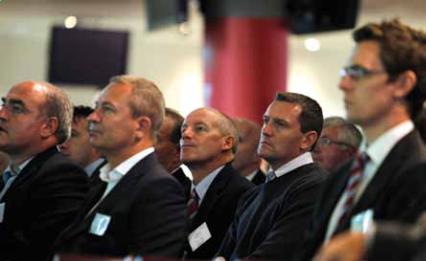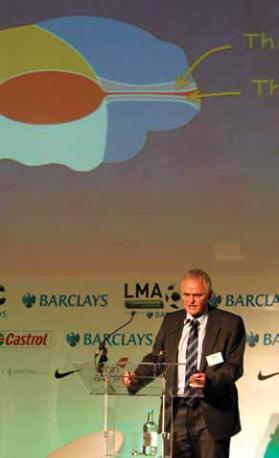Basic HTML Version





— Management conference 2011 —
the
manager
WINTER 2011
“I was six weeks into management
at Coventry when I realised that
I knew absolutely nothing about
the job... it’s only when you’re
in it that you realise how much
mental strength you need to
manage or lead any group.”
Gordon Strachan
FA’s National Football Centre at St
George’s Park, David Sheepshanks,
who gave an update as to the current
status of the development (which is on
track for its 2012 opening) and an
overview of the impact it will have,
not only on football, but on a wide
range of UK sports.
Sheepshanks’ presentation was
followed by an interview with the
Arsenal manager Arsène Wenger.
In an absorbing talk, Wenger spoke
about his love for the game and of
the continuing search for excellence
which keeps him motivated.
Wenger also offered a fascinating
insight into what it is that motivates
professional footballers, saying: “The
players who make it to the top are the
ones with a very strong internal need;
you have people who are in there
because they love to win and you have
people who are in there because they
hate to lose. This is not exactly the
same... I would say that people who
love to win are strikers and people
who hate to lose are defenders. The
needs may be different, but the final
focus is the same.”
The French manager added his
voice to those congratulating the
Barclays Premier League on reaching
its 20th season, but also warned about
the challenges it faces. Now, he
suggested, might be a good time for
all interested parties to get together to
plan for the next 20 years.
The interview with Wenger was
followed by what, for many, was the
highlight of the day, a presentation on
the workings of the brain by the
British cycling team’s consultant
psychiatrist Dr Steve Peters (see ‘The
Outsider’ on page 32).
Dr Peters’ address ‘Optimising the
Human Mind’ explored how the brain
works – what it can and can’t do – and
how it has developed through
evolution to be where it is today.
In a fascinating, entertaining (and
often bewildering) half hour, Dr
Peters showed how a small, but
➽

